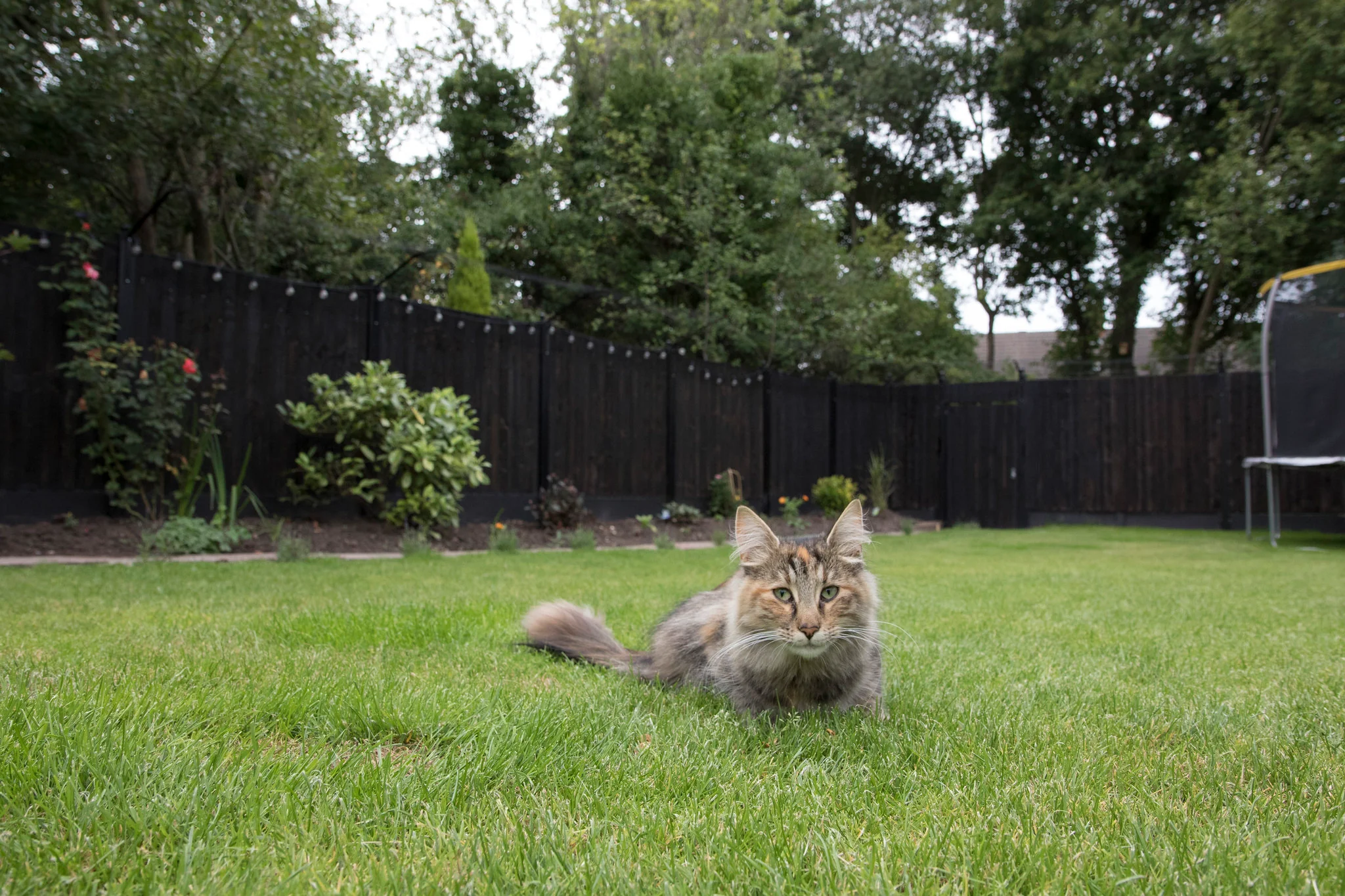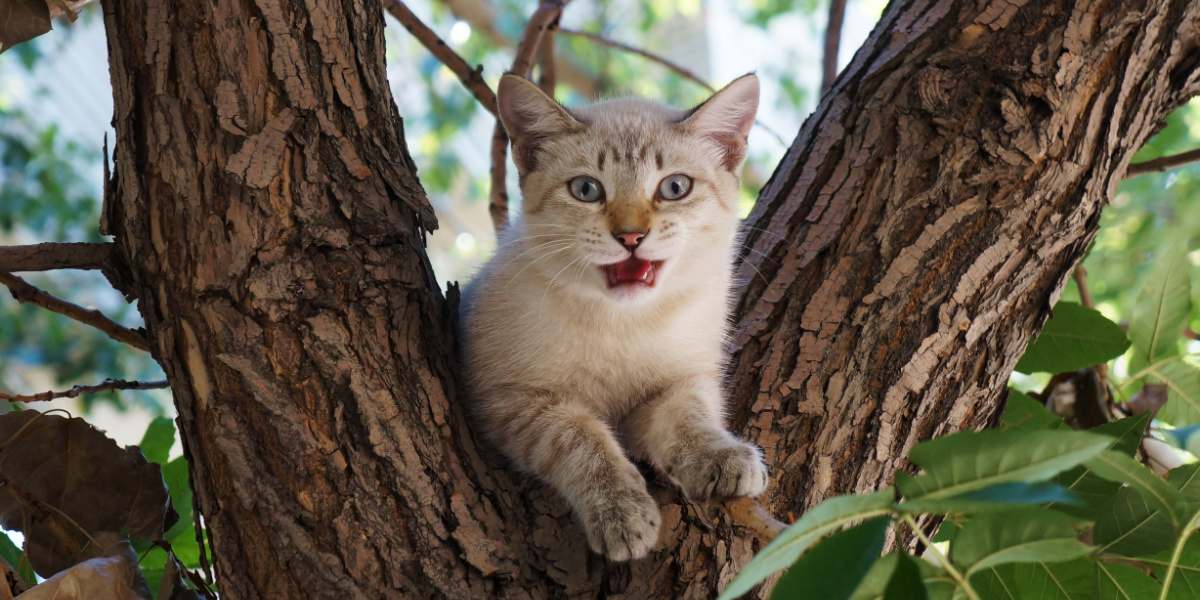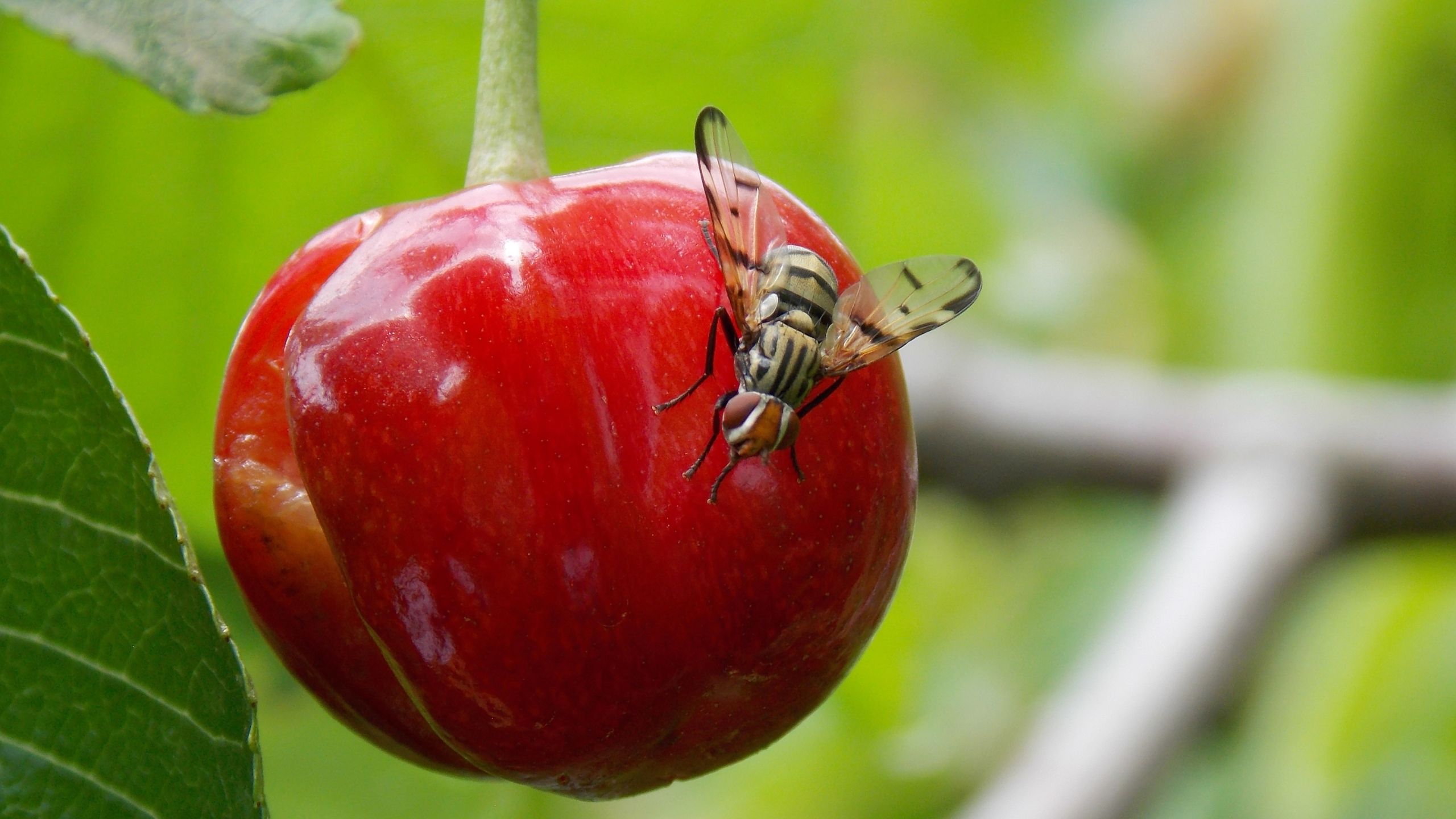Home>Gardening News and Trends>Latest News>How To Keep Cats Out Of Trees


Latest News
How To Keep Cats Out Of Trees
Modified: January 22, 2024
Discover the latest news on how to keep cats out of trees. Find effective methods and solutions to prevent your furry friends from reaching the heights they shouldn't be.
(Many of the links in this article redirect to a specific reviewed product. Your purchase of these products through affiliate links helps to generate commission for Chicagolandgardening.com, at no extra cost. Learn more)
Table of Contents
Introduction
Cats and trees have a long-standing relationship that can bring both joy and frustration to cat owners. While it’s natural for cats to climb trees, it can also lead to potential risks and hazards for both the cats and their owners. Understanding why cats climb trees and finding effective methods to keep them out of trees are essential for ensuring their safety and peace of mind.
Cats are instinctively curious and agile creatures. Climbing trees allows them to explore their environment, survey their surroundings, and fulfill their natural instincts for hunting and playing. Whether it’s chasing birds, seeking higher ground, or just satisfying their sense of adventure, climbing trees is an activity that comes naturally to most feline companions.
However, the joy of watching your cat nimble up a tree can quickly turn to worry and concern. Cats can easily become stuck or unable to climb down safely, leading to potential injuries or accidents. Additionally, cats that climb trees may be exposed to other risks, such as encountering aggressive wildlife, getting tangled in branches, or becoming prey to larger predators.
To prevent these potential dangers and keep your cat safe, it’s important to implement effective methods for keeping them out of trees. In this article, we will explore various strategies and techniques that cat owners can employ to discourage their furry friends from scaling trees. By understanding the reasons behind their climbing behavior and implementing the right solutions, you can ensure that your cat remains safe while still allowing them to indulge in their natural instincts.
Now, let’s dive into the different methods you can use to keep your cat out of trees and ensure their well-being.
Understanding Why Cats Climb Trees
Cats have a natural inclination to climb trees due to a combination of their instincts, physical abilities, and the stimuli provided by their surroundings. Understanding why cats are drawn to trees can help us devise effective methods to discourage this behavior when necessary.
First and foremost, climbing trees allows cats to satisfy their highly developed hunting instincts. Perched on a tree branch, cats have a bird’s-eye view of their surroundings, enabling them to spot potential prey, such as birds or small rodents, more easily. This instinctual advantage has been ingrained in their DNA for generations.
Moreover, climbing trees provides cats with a sense of security and safety. In the wild, trees serve as a refuge from predators, allowing cats to retreat to higher ground where they are less vulnerable. This natural instinct to seek elevated positions is still prevalent in domesticated cats, as they try to maintain a sense of control over their environment.
In addition to their predatory instincts, cats are also driven by their inherent curiosity and need for mental stimulation. Climbing trees introduces them to new sights, scents, and sounds, expanding their sensory experiences. It satisfies their innate need for exploration and can provide a form of entertainment and mental enrichment.
Furthermore, cats are known for their exceptional agility and remarkable climbing skills. Their flexible bodies, sharp claws, and strong muscular build allow them to effortlessly scale trees, even navigating through narrow branches with ease. Their ability to climb trees is an impressive display of their physical prowess and reflects their natural feline abilities.
Overall, cats climb trees because it aligns with their natural instincts for hunting, seeking refuge, exploring their environment, and showcasing their physical abilities. While it’s important to acknowledge and respect these instincts, there are situations where it becomes essential to discourage this behavior to ensure their safety.
In the following sections, we will delve into various methods and strategies that can be implemented to keep cats out of trees, mitigating the potential risks and hazards associated with tree climbing.
The Dangers of Cats in Trees
While cats may enjoy the thrill of climbing trees, there are several risks and dangers associated with this behavior that every cat owner should be aware of. Recognizing these dangers is crucial for ensuring the safety and well-being of our feline companions.
One of the primary risks of cats in trees is the potential for them to become stuck or trapped. Cats may climb higher than they are comfortable descending, leading to a distressing situation where they are unable to find their way down. This can cause extreme anxiety and stress for both the cat and its owner.
Additionally, cats may encounter other wildlife or predators while perched on a tree branch. Birds of prey, such as hawks or eagles, can pose a serious threat to cats in elevated positions. In some cases, aggressive or territorial animals, like squirrels or raccoons, may engage in confrontations with cats in trees, resulting in injuries or attacks.
Another hazard of tree climbing is the possibility of cats getting tangled or caught in branches. Cats, especially those with long fur, may inadvertently get their fur or limbs entangled in tree branches, restricting their movement. This can cause physical discomfort, injury, or even lead to strangulation in severe cases.
Furthermore, as cats climb higher, the branches become thinner and less stable. With their agile movements, cats may misjudge the stability of the branches, leading to falls or branches breaking under their weight. Falls from significant heights can result in broken bones, internal injuries, and other serious health consequences.
Lastly, cats that remain in trees for extended periods without access to food, water, or shelter are at risk of dehydration, hunger, and exposure to harsh weather conditions. This can have detrimental effects on their overall health and well-being. Even if they have access to these necessities, being stuck in a tree can cause significant stress and anxiety for cats.
Taken together, it’s clear that allowing cats to freely climb trees without supervision or precautions can expose them to various dangers and risks. Implementing measures to discourage tree climbing when necessary is essential for the safety and welfare of our feline companions. In the next section, we will explore effective methods to keep cats out of trees and mitigate these potential hazards.
Methods for Keeping Cats Out of Trees
Keeping cats out of trees requires a combination of preventive measures and alternative options to satisfy their climbing instincts. By implementing the following methods, you can effectively discourage your cat from scaling trees and minimize the associated risks and hazards.
- Trim Overhanging Branches: Start by trimming any overhanging branches near your trees. By removing easy access points, you make it more challenging for your cat to jump onto the tree. This method reduces the temptation for them to climb up in the first place.
- Create a Barrier around the Tree: Erecting a physical barrier around the base of the tree can prevent your cat from climbing up. Use materials like chicken wire or plastic mesh to enclose the area. Ensure the barrier is tall enough and securely attached to the tree to deter your cat’s climbing attempts.
- Use Deterrents or Repellents: Applying deterrents or repellents around the base and lower trunk of the tree can discourage your cat from climbing. There are various commercial products available, including sprays with scents that cats find unpleasant, such as citrus or vinegar. Alternatively, you can try natural solutions like scattering pinecones or spraying diluted lemon juice, as cats often dislike the texture or scent of these items.
- Provide Alternative Climbing Options: Kitties love to climb, so it’s essential to offer them acceptable alternatives to satisfy their climbing instincts. Install a sturdy cat tree or create a designated climbing area with shelves, platforms, and scratching posts indoors. By providing a suitable and enticing climbing environment, you decrease the likelihood of your cat seeking out trees as their primary climbing spot.
- Train and Supervise Your Cat: Training your cat to understand commands like “no” or “come down” can be highly beneficial. Engage in positive reinforcement training to reward desired behavior and discourage climbing trees. Additionally, supervision is crucial when your cat is outdoors. Keep a watchful eye on them, especially around trees, and intervene if you notice any climbing attempts.
It’s important to note that not all cats will respond to the same methods, so it may require some trial and error to find the most effective approach for your feline companion. Combining multiple methods can increase their effectiveness, creating a more successful outcome.
By employing these strategies, you can help keep your cat safe and reduce the chances of them getting stuck, injured, or exposed to other hazards associated with tree climbing. Remember, prevention is key, and the well-being of your cat should always be the top priority.
Trim Overhanging Branches
One effective method for keeping cats out of trees is to trim any overhanging branches that provide easy access for them to jump onto the tree. By removing these accessible pathways, you make it more challenging for your cat to climb up in the first place.
Start by inspecting the trees in your yard and identifying any branches that hang low or close to structures like fences or rooftops. These are the branches that cats can use as launch pads to reach higher areas. Use pruning shears or hire a professional arborist to trim these branches, ensuring they are safely removed.
When trimming the branches, make sure to follow proper pruning techniques. Cut the branches close to the trunk or main branch without leaving any stubs, as these can become potential points of decay or disease. It’s also important to avoid damaging the tree’s overall structure or causing harm to the tree itself.
By trimming overhanging branches, you create a physical barrier that makes it more difficult for your cat to access the tree. This method reduces the temptation for them to climb up and can be especially effective for trees located close to structures or fences where cats often find an easy route to the branches.
However, keep in mind that cats are skilled climbers and may still find a way to reach the tree through other means. Therefore, it’s essential to combine this method with other preventive measures to ensure maximum effectiveness.
Regular maintenance is key to keeping the branches trimmed and preventing cats from accessing the tree. Monitor the growth of nearby trees and routinely prune any new branches that may appear. By staying on top of the maintenance, you can create a safe environment for your cat and reduce the chances of them getting stuck or encountering other dangers associated with tree climbing.
Remember to observe safety precautions when trimming branches. If the branches are too high or require professional equipment, it’s best to hire a certified arborist to handle the job. Additionally, be cautious when using ladders or climbing to reach higher branches, ensuring you have steady footing and proper equipment for your own safety.
By trimming overhanging branches, you can significantly decrease the accessibility of trees to your cat, discouraging their climbing attempts and ensuring their safety in the process.
Create a Barrier around the Tree
Creating a physical barrier around the base of the tree is another effective method to keep cats out of trees. By erecting a barrier, you can prevent your cat from climbing up and accessing the tree in the first place.
There are several materials you can use to construct a barrier, such as chicken wire, plastic mesh, or fencing. The height of the barrier will depend on the size and agility of your cat, but it should be tall enough to discourage them from attempting to climb over it. For most cats, a barrier of at least 4 to 6 feet should suffice.
Start by measuring the circumference of the tree trunk at the base. Use this measurement to determine the length of the barrier material needed to enclose the area around the tree. Ensure there are no gaps or openings that your cat can slip through.
Secure the barrier material around the tree trunk by using zip ties, wire, or other fastening methods. Be careful not to tighten the material too much to avoid harming the tree. If the tree has low branches that extend outward, consider extending the barrier to encompass a wider area to prevent your cat from jumping onto the tree from another angle.
It’s important to use materials that are sturdy and resistant to cat scratching or chewing. Regularly inspect the barrier for any signs of damage or weakening, and make necessary repairs or replacements as needed.
Creating a physical barrier around the tree not only prevents your cat from climbing up, but it also serves as a visual deterrent. Cats are less likely to attempt to climb a tree when they see a barrier in place. Over time, they will learn to associate the tree with the barrier and may choose alternative climbing options instead.
Keep in mind that some cats may be persistent and determined to find a way around the barrier. In such cases, combining this method with other deterrents or alternative climbing options may provide better results.
Remember to regularly monitor the barrier and make necessary adjustments. As your cat grows or changes their behavior, you may need to modify the height or design of the barrier accordingly.
Creating a physical barrier around the tree is an effective and straightforward method to keep cats out of trees. By implementing this preventive measure, you can ensure the safety and well-being of your cat, minimizing the risks associated with tree climbing.
Use Deterrents or Repellents
Using deterrents or repellents is another effective method to discourage cats from climbing trees. By applying scents or textures that cats find unpleasant, you can create an aversion to the tree and deter them from attempting to climb it.
There are several commercially available deterrent sprays specifically designed to discourage cats from certain areas. These sprays typically contain scents that cats dislike, such as citrus, vinegar, or herbs like lavender or rosemary. Follow the instructions on the product label and apply the spray to the lower trunk and base of the tree.
If you prefer natural alternatives, there are also DIY solutions you can try. For instance, cats generally dislike the texture of pinecones, so scattering a few around the base of the tree can discourage climbing. Another option is to mix diluted lemon juice and water and spray it around the tree. The strong scent of the lemon can act as a natural deterrent.
Reapplication of the deterrents may be necessary after rainfall or as the scent fades over time. Regularly monitor the effectiveness of the repellents and adjust the application as needed.
It’s essential to note that while deterrents can be effective, they may not work equally well for all cats. Some cats may be more determined or less sensitive to certain scents or textures. As such, it may be necessary to try different options or combine deterrents with other methods to achieve the desired results.
Keep in mind that while using deterrents or repellents can discourage your cat from climbing a specific tree, they may seek out alternative trees in your yard or nearby. Therefore, it’s beneficial to implement this method in conjunction with other preventive measures to discourage tree climbing entirely.
Moreover, it’s important to choose deterrents or repellents that are safe for your cat and the environment. Avoid using any products that may be toxic or harmful to your feline companion. Always read the labels and consult with your veterinarian if you have any concerns or questions.
Using deterrents or repellents can be an effective tool in your arsenal to discourage cats from climbing trees. By creating an undesirable environment around the tree, you can shift your cat’s focus to alternative climbing options and minimize the risks associated with tree climbing.
Provide Alternative Climbing Options
One of the best ways to keep cats out of trees is by providing them with alternative climbing options that are more suitable and appealing. By offering your cat designated areas where they can satisfy their climbing instincts, you can redirect their attention away from trees.
Investing in a sturdy and well-built cat tree or cat climbing tower is a great option. These structures usually consist of multiple platforms, shelves, and scratching posts that mimic the natural elements of a tree. Look for one that is tall enough to provide your cat with a vertical climbing experience and stable enough to support their weight.
Place the cat tree in a central and accessible location within your home. This encourages your cat to use it as their preferred climbing spot, rather than venturing outside to find trees. Additionally, by providing various levels and perches on the cat tree, you mimic the experience of climbing up a tree, fulfilling their natural instincts.
Aside from a cat tree, you can also create a designated climbing area using shelves or wall-mounted steps. Install these structures at different heights on a wall, allowing your cat to climb and explore vertically. Ensure the shelves or steps are securely attached to the wall to support your cat’s weight and provide a safe climbing experience.
Integrate scratching posts into the alternative climbing options to fulfill your cat’s need to scratch and climb simultaneously. Cats naturally want to mark their territory and maintain healthy claws, so having scratching posts available in the designated climbing area can help redirect their tree-climbing behavior.
Encourage your cat to use the alternative climbing options by using enticing toys or treats. Place their favorite toys or treats on the different levels of the cat tree or near the shelves, rewarding them for using these designated areas. Positive reinforcement and praise can go a long way in encouraging the desired behavior.
Regularly interact and play with your cat in the designated climbing area. This not only provides mental stimulation and exercise for your cat but also helps establish a positive association with these climbing options.
Remember, cats are individuals, and their preferences may vary. Observe and understand your cat’s climbing habits and preferences to provide alternative options that cater to their unique needs and preferences. By offering appealing and suitable climbing environments, you can redirect your cat’s attention away from trees and ensure their safety and enjoyment.
Train and Supervise Your Cat
Training and supervising your cat can play a significant role in keeping them out of trees and ensuring their safety. By teaching them appropriate behaviors and providing supervision when they are outdoors, you can minimize the risks associated with tree climbing.
Start by training your cat to respond to commands like “no” or “come down.” Use positive reinforcement techniques, such as rewards or treats, to encourage them to obey these commands. Consistency and repetition are key in reinforcing the desired behavior and helping your cat understand what is expected of them.
When you notice your cat attempting to climb a tree, calmly and firmly say “no” and redirect their attention to an alternative climbing option, such as a cat tree or designated climbing area. Reward and praise them when they choose the alternative option, reinforcing that this behavior is desirable.
Supervising your cat when they are outdoors is essential for their safety. Keep a watchful eye on them, especially around trees, and intervene if you notice any climbing attempts. By being present and attentive, you can prevent any potential accidents or dangers.
If you have a fenced yard, ensure that it is secure and free of any tree branches that may allow your cat to jump over or climb up the fence. Regularly inspect and maintain the fence to prevent any escape attempts or access to trees outside the fenced area.
Consider using a leash and harness when taking your cat outside. This allows you to have better control over their movements, preventing them from climbing trees or wandering off. Introduce the leash and harness gradually, using positive reinforcement to associate it with enjoyable experiences.
Engaging in interactive play sessions with your cat indoors can help redirect their energy and reduce the desire to climb trees. Use interactive toys, laser pointers, or feather wands to simulate hunting and provide mental and physical stimulation. By keeping your cat entertained and engaged, you lessen their inclination to seek out trees for stimulation.
Training and supervising your cat require patience, consistency, and positive reinforcement. It’s important to remember that cats are independent animals with their own instincts and behaviors. Be understanding and take a gentle approach, focusing on redirecting their attention rather than punishing or scolding them.
By training your cat and providing supervision when they are outdoors, you can create a safe environment and minimize the risks associated with tree climbing. Remember to always prioritize your cat’s well-being and tailor the training to their individual needs and abilities.
Conclusion
Keeping cats out of trees is essential for their safety and well-being. Understanding why cats climb trees and the dangers associated with this behavior is crucial for implementing effective preventive measures. By combining various methods, such as trimming overhanging branches, creating barriers, using deterrents or repellents, providing alternative climbing options, and training and supervising your cat, you can significantly decrease the chances of them climbing trees and encountering potential hazards.
Trimming overhanging branches removes easy access points, discouraging cats from jumping onto trees in the first place. Creating physical barriers around trees prevents cats from climbing up, while deterrents or repellents make the trees less appealing or desirable. Offering alternative climbing options, such as cat trees or designated climbing areas indoors, satisfies their natural instincts. Training your cat and providing supervision when they are outdoors helps reinforce desired behaviors and ensures their safety.
Remember, not all methods may work equally well for every cat, so it may require some experimentation and adjustment to find the most effective strategy for your feline companion. It’s important to prioritize their safety and maintain a watchful eye to intervene and redirect their behavior when needed.
By taking proactive measures, you can create a safe and stimulating environment for your cat, balancing their natural instincts while minimizing the risks associated with tree climbing. Providing alternative climbing options and engaging in interactive play with your cat can foster a strong bond and a happy, healthy, and tree-climbing-free feline companion.
Now armed with the knowledge and understanding of how to keep cats out of trees, you can implement these strategies and enjoy peace of mind while ensuring the well-being of your beloved feline friend.









